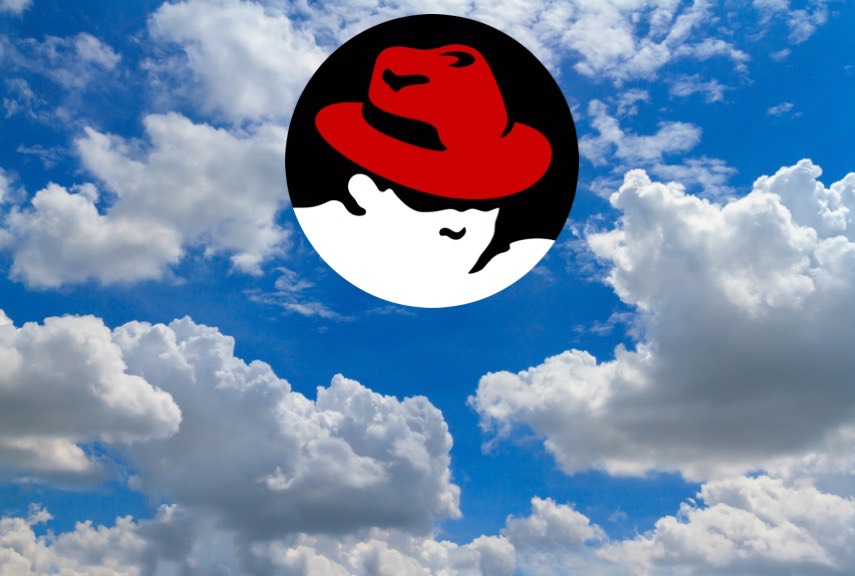UPDATED 14-Aug: Red Hat has come a long way from being a provider of open source Linux solutions for enterprises to cloud services. Benjamin Henshall, Country Manager, India & Director of Sales, Financial Services APAC, Red Hat takes us through Red Hat’s transformation. He also explained how Red Hat is helping governments and business institutions with their transformation journeys.
DC: We’re seeing a big change at Red Hat over the years from open source Linux to containers and the cloud. Now there are even partnerships with once fierce competitors like IBM, Amazon and Alibaba. What’s the story behind this transformation?

Benjamin Henshall, Country Manager, India & Director of Sales, Financial Services APAC, Red Hat
Benjamin: Red Hat’s journey of change and transformation to the cloud has been one that I would suggest is a natural progression, given that open source, and predominantly Linux, has been the progenitor of what is known as cloud computing today. So, if Linux was not around, then the cloud would not exist. For the simple fact that if Amazon wanted to build an infrastructure on demand, for public consumption at a more cost-based per unit of consumption on an hourly or minute basis, it could never ever do that without Linux. It would never be commercially viable to do what it was doing on proprietary infrastructure stacks. You would never get that on mainframe or PHP or Sun Solaris or EMC infrastructure storage. It just wouldn’t make sense commercially.
When you have an introduction of Linux, Red Hat Enterprise Linux, and then Intel or x86 architecture, the fusion of these individual elements together would produce the cloud.What open source also did was, it wasn’t just constrained to doing operating systems and kernels — you know that type of assembly like frameworks and languages — it also ushered in middleware tools, new developer frameworks, different databases, messaging, data grids, user interfaces, developer tools etc. There was this explosion of open source projects that were trying to address software development issues, runtimes and really importantly, business issues. But, in a way, software is engineered and architected through the open source model, because the proprietary world was not doing a great job at addressing this problem space.
A really clear example is the proprietary middleware application server. You need 4 GB just to have the installer installed. That’s even before storing the application server, which is another 4 to 6 GB of memory. That would never float on the cloud. This is where open source, open source middleware and other things blossomed. And that’s where the introduction of Amazon happened, which was the first foray into public cloud of consuming multi-tenant infrastructure services. Then Salesforce was already doing SaaS and the rest is history. And open source is a big front-sitter there.
The other important thing is that Red Hat Enterprise Linux made the circus of open source safe and secure for the Enterprise to use.
That’s why Red Hat’s journey to the cloud has been a natural progression and has been at the forefront of namely cloud computing.
If Linux was not around, then the cloud would not exist. For the simple fact that if Amazon wanted to build an infrastructure on demand, for public consumption at a more cost-based per unit of consumption on an hourly or minute basis, it could never ever do that without Linux.
DC: How are you helping government and organisations solve challenges, and with their digital transformation journeys through open innovation and so forth?
Benjamin: It’s a very valid question and one that never goes away. It’s not like I can say, I have managed to master cost savings and so the job is done. You know cost savings is always the case and it never goes away. Business innovation and challenges will always be there. And I think it’s important to answer that. It’s important for Red Hat itself to answer that.
What is our role in helping institutions and governments in accelerating their rate of transformation to meet the objectives that they have set in the market or to the citizens they are accountable to? It’s a question of a business transforming, they are always transforming. But it’s a case of: Are they thriving or are they surviving or are they dying? It’s a question of how quickly you can make the transition, how quickly can you structure your team or department to execute on the strategies you need to execute and reduce risk, and reduce cost, and improve quality and so on.
So how is Red Hat doing it? There’s multiple ways of doing it. The first way is by providing an open, interoperable, compliant, secure, hybrid infrastructure and software architecture that allows businesses to build cutting-edge, modern applications and data for their systems.
The second thing we are doing is helping these businesses to adopt these new next generation architectures in their existing brownfield data centres and into the cloud so that they can do this in a faster, more expeditious manner. I’d say this is a complicated, difficult, and arduous task. The way that software is engineered and designed today, it’s difficult. It’s really hard.
And the thing is you have brownfield or legacy systems and you have these shiny new systems they are trying to do. This is what causes a bimodal, right? It is difficult to bridge the two together. Because you can’t just shut off all the existing systems and turn them into new. This is a process of transition. And so, we put this architecture in that allows you to modernise your brownfield legacy systems and also do shiny new stuff on new architectures and middleware, databases and frameworks. We have this common, consistent, next generation architecture that you could do both with, and that makes it easier to have this system work together.
The third part we are doing is that we are helping organisations in the practices of doing modern application development, modern testing and modern operations. This is known as DevOps.
This is where we have a reasonably solid consulting practice that helps customers implement the change within the organisation, structures and people. And also, we have got what we call an open innovation lab, which is how we want to kick-start an organisation’s journey and process in the best possible way. Because that’s the difficulty — changing people, changing behaviours and changing the way they work, where IT is not something that is outsourced; it is something ingrained in the way that a business needs to implement its business strategies.
When you have an introduction of Linux, Red Hat Enterprise Linux, and then Intel or x86 architecture, the fusion of these individual elements together would produce the cloud.
DC: How do you help organisations modernise their legacy applications? Is it the container approach that you are taking?
Benjamin:There are a few solution practices that we take on there, so you have your classic infrastructure and modernisation, so that’s going from Unix to Red Hat Enterprise Linux; it’s going from proprietary legacy and middleware and databases to our JBoss middleware architecture. So, it’s modernising those layers of the IT infrastructure and software stack onto a more modern, cutting-edge software and infrastructure architecture. So that’s one way, and we call that the optimisation and legacy modernisation practice that we have.
DC: There is something called as lift and shift, right? As an approach?
Benjamin: Yes, so I am just talking about the bare bones of taking what you have and re-platforming it or replacing it with a new modern architecture. But then to your point about lift and shift, that’s where you get to the application side of things. Though sometimes applications will not be able to be lifted and deployed on to say, a JBoss or Red Hat enterprise Linux, it would need some modernisation.
This is where we have an application modernisation practice, and we will help a customer assess the nature of their applications and work with them to do either a lift and shift, or a lift and refactor, or a complete rewrite and in terms of target state business requirements, we would advise them if they need to do pure microservices container based deployment, where they need high velocity, extreme scalability, fast rate of change, where they don’t need to take down the entire application. That’s obviously the complete entire target state you want to get to, but that’s complicated, doing microservices, doing containers, doing that sort of Kubernetes-based container orchestration deployment. That is a difficult task for most organisations to suddenly go from waterfall, monolithic applications and runtimes to that type of microservices, container cloud architecture. So, we have also a state of in-between where you can modernise and refactor some part of the applications, so that you aren’t going from ground zero to sprinting, like the microservices in one entire swoop, it’s a process of change and modernising those applications at a time and that requires a consulting and advisory practice to help them.
So, you mentioned containers, a key to the target runtime on that Red Hat OpenShift is the containers platforms because there are just so many benefits of using containers as a runtime for lift and shift or lift and refactor or microservices. So OpenShift container platform can handle all three depending on some of the circumstances and the nature of the applications and data.
Part II: ‘Indian CIOs want to adopt a hybrid cloud, poly-cloud or multi-cloud strategy’









